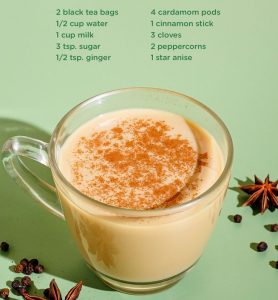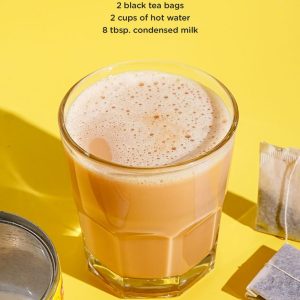How to Make Milk Tea at Home?
How to Make Milk Tea
Craving a refreshing and customizable drink? Look no further than milk tea! This popular beverage combines brewed tea with milk and can be enjoyed hot or cold. Making milk tea at home is surprisingly simple and allows you to adjust the sweetness, and tea strength, and even add fun toppings to create your perfect cup. Let’s explore the basic steps for brewing milk tea and discover some delicious variations you can try yourself! In this guide, we’ll explore the steps to craft the perfect cup of milk tea, along with tips, variations, and cultural insights.
Introduction to Milk Tea
Milk tea has a long history and is deeply ingrained in various cultures. Originating from regions like India, China, and Taiwan, it has evolved into numerous variations, each offering its unique flavor profile. From classic British milk tea to trendy bubble tea, this beverage continues to captivate tea enthusiasts around the globe. Also, read about How much caffeine in green tea
Ingredients for Making Milk Tea
To make milk tea, you’ll need a few basic ingredients:
- Tea leaves: Choose your favorite variety, such as black tea, green tea, or oolong tea.
- Milk: Opt for whole milk, almond milk, or any other milk alternative based on your preference.
- Sweetener: Sugar, honey, or condensed milk can be used to sweeten the tea.
- Optional additives: Spices like cinnamon or cardamom, as well as fruit syrups, can enhance the flavor of your milk tea.
Choosing the Right Tea Leaves
The type of tea leaves you use will greatly impact the flavor of your milk tea. While black tea is the traditional choice, you can experiment with green tea or herbal blends for a unique twist. Consider factors such as aroma, strength, and caffeine content when selecting your tea leaves.
Preparing the Tea Base
Start by boiling water and steeping the tea leaves for the recommended duration. Once brewed to perfection, strain the tea leaves to remove any solids. This forms the base of your milk tea, providing a robust and aromatic foundation.

Adding Milk
Next, add milk to the brewed tea in a ratio that suits your taste preferences. Some prefer a strong tea flavor with just a splash of milk, while others enjoy a creamier texture with equal parts tea and milk. Experimentation is key to finding the perfect balance.
Discover more about What is Boba Tea
Sweetening the Tea
To sweeten your milk tea, stir in sugar, honey, or condensed milk according to your desired level of sweetness. Be mindful not to overpower the delicate flavors of the tea, especially if you’re using high-quality tea leaves.
Adding Optional Flavors
Get creative with your milk tea by incorporating additional flavors and spices. Whether you prefer a hint of cinnamon or a burst of fruitiness from syrups, there are endless possibilities to customize your brew.
Making Iced Milk Tea
For a refreshing twist, try making iced milk tea using the cold brewing method. Simply brew the tea leaves in cold water overnight, then add milk and ice cubes to serve. For a decadent treat, consider adding a scoop of ice cream for extra creaminess.
Health Benefits of Milk Tea
In addition to its delicious taste, milk tea offers various health benefits. Rich in antioxidants, it can help boost immunity and fight inflammation. Additionally, the combination of tea and milk provides calcium and vitamins essential for bone health and overall well-being.
Cultural Significance
Milk tea holds cultural significance in many parts of the world. In India, masala chai is a staple beverage enjoyed during social gatherings and religious ceremonies. In Taiwan, bubble tea has become a global sensation, with countless variations and flavors to choose from.
Tips for the Perfect Cup
Achieving the perfect cup of milk tea requires attention to detail and experimentation. Pay close attention to factors such as water temperature, brewing time, and milk-to-tea ratio to ensure optimal flavor and consistency.

Common Mistakes to Avoid
When making milk tea, it’s important to avoid common pitfalls that can compromise the quality of your brew. Be cautious of over-brewing the tea, using too much milk, or using low-quality ingredients that can detract from the overall experience.
Serving and Enjoying Milk Tea
Once prepared, serve your milk tea with garnishes like cinnamon sticks or fruit slices for added flair. Pair it with your favorite snacks or desserts for a delightful afternoon treat that’s sure to satisfy your cravings.
Variations of Milk Tea
Beyond the classic milk tea, there are numerous variations to explore. Bubble tea, also known as boba tea, features chewy tapioca pearls added to the drink for a fun and textural experience. Masala chai offers a spicy and aromatic twist, infused with ginger, cloves, and other spices.
Conclusion
In conclusion, making milk tea at home is a simple and enjoyable process that allows you to customize your brew to suit your taste preferences. By following these steps and experimenting with different ingredients and flavors, you can create a delicious and satisfying beverage that rivals your favorite café.
FAQs
Can I use any type of tea leaves to make milk tea?
While black tea is the traditional choice for milk tea, you can experiment with green tea, oolong tea, or herbal blends to create unique flavors.
How much milk should I add to my milk tea?
The amount of milk can vary depending on personal preference. Start with a small amount and adjust to taste.
Can I make milk tea without sweeteners?
Yes, you can omit sweeteners altogether or use natural alternatives like honey or maple syrup for a healthier option.
What are some creative ways to flavor milk tea?
You can add spices like cinnamon, cardamom, or nutmeg for a warm and aromatic flavor. Fruit syrups or extracts can also add a burst of sweetness and fruitiness to your milk tea.
Is milk tea suitable for vegans?
Yes, you can use plant-based milk alternatives like almond milk, soy milk, or coconut milk to make vegan-friendly milk tea.
